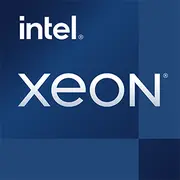Intel Xeon E-2286M

インテル Xeon E-2286M: プロフェッショナルのための力と信頼性
2025年4月
モバイルプロセッサの世界では、インテル Xeon は常にプロフェッショナル向けの信頼性とパフォーマンスと結びつけられてきました。2019年に登場したXeon E-2286Mは、依然としてワークステーションやプレミアムビジネスノートパソコンのセグメントで関連性を持っています。2025年において、このCPUがどのような人々に適しているのか、どんな利点を提供するのかを見ていきましょう。
アーキテクチャとプロセス: Coffee Lakeの14nm
E-2286Mプロセッサは、Coffee Lakeマイクロアーキテクチャに基づいており、製造プロセスは14nmです。インテルはすでに10nmや7nm(ハイブリッドモデルにおいて)に移行していますが、14nmは企業セクターにおいて安定したプラットフォームを提供しています。
- コアとスレッド: 8コアと16スレッド。ベースクロックは2.4GHz、最大ターボクロックは単一コアで5.0GHz、全コアで4.4GHzです。
- 統合グラフィックス: Intel UHD Graphics P630、ベースクロックは350MHz、最大は1.25GHz。4Kディスプレイと動画のエンコード/デコードのハードウェアアクセラレーション(HEVC、VP9)をサポートします。
- キャッシュ: 16MBのSmartCache。
アーキテクチャの特徴:
- ECCメモリ(エラー訂正コード)サポート — Xeonの重要な特徴であり、重要なタスクにおけるエラーを防止します。
- 仮想化(VT-x、VT-d) — 開発者やITインフラにとって重要です。
- Intel vPro — 企業デバイスのリモート管理とセキュリティのための技術です。
消費電力とTDP: 45W — バランスか妥協か?
TDP(熱設計電力)は45Wであり、これはプロセッサが強力な冷却システムを備えたノートパソコン — ワークステーションまたは「シッシーモデル」のビジネス向けに設計されていることを示しています。
- 熱排出: 負荷がかかると(例えば、レンダリング中)、温度は95〜100°Cに達することがあり、質の高いヒートパイプやファンが必要です。
- 省エネモード: インテル スピードシフト(高速クロック切替)、ダイナミック電圧管理(DVFS)。アイドル時にはクロックが1.2GHzに下がり、消費電力が10〜15Wに削減されます。
パフォーマンス: 実際のタスクとターボモード
Geekbench 6のデータによると(1535 — シングルスレッド、6753 — マルチスレッド)、E-2286Mは2025年において現代のミッドレンジCPUと競争し、5nmトップモデルには勝てません。
- オフィス作業: ドキュメント、ブラウザ(20以上のタブ)、ビデオ会議を使用しているときの負荷は10〜20%。マルチタスクでも遅延はありません。
- マルチメディア:
- Premiere Proでの4K動画レンダリング: 8コアの負荷で、6コアのCPUと比較してエクスポート時間が30%短縮されます。
- Blender(Cycles)での作業: 16スレッドにより、中程度のシーンを5〜7分で処理できます。
- ゲーム: 統合グラフィックスP630はAAAタイトルには不十分です。Dota 2(フルHD、低設定)で40〜50 FPS。ゲームにはディスクリートGPU(例: NVIDIA RTX 3050)が必須です。
- ターボモード: 短時間の負荷(アプリケーションの起動、コードのコンパイルなど)がかかると、クロックが5.0GHzに上昇しますが、30〜60秒後に熱過多によるスロットリングが発生します。
使用シナリオ: 誰がXeon E-2286Mを必要としているか?
1. エンジニアとデザイナー: CADアプリケーション(AutoCAD、SolidWorks)は、安定したマルチスレッド作業とECCメモリを必要とします。
2. 開発者: 大規模プロジェクトのコンパイル、仮想化(Docker、VMware)。
3. アナリスト: Python/Rでのビッグデータ処理。
4. 企業ユーザー: セキュリティ(vPro)とリモート管理。
不適応:
- ゲーマー(ディスクリートGPUなし)。
- 自律性を重視するユーザー(下記参照)。
自律性: パフォーマンスの代償
E-2286Mを搭載したノートパソコンは、通常の負荷(ウェブサーフィン、オフィス作業)で4〜5時間以上の動作が稀です。理由は、高いTDPと現代のエネルギー効率の良いコア(インテル第12世代ハイブリッドCPUのような)の欠如です。
省エネルギー技術:
- インテル ダイナミック チューニング: バッテリーモードでのパフォーマンスを自動的に制限します。
- ウルトラ ロー パワー ステート: 周辺機器のための深いスリープモード。
アドバイス: 90Wh以上のバッテリーを持つモデル(例: Dell Precision 7550)を選ぶと、動作時間が6〜7時間に延びます。
競合他社との比較: AMD、Apple、その他
- AMD Ryzen 9 6900HX(2022、6nm、8コア/16スレッド):
- マルチスレッドタスクにおけるパフォーマンスが高い (+15% Cinebench R23で)。
- 優れた統合グラフィックス(Radeon 680M)。
- ECCメモリのサポートなし。
- Apple M2 Pro(2023、5nm、10コア):
- 40%エネルギー効率が高い。
- シングルスレッドタスクでの速度が高い。
- Windowsソフトとの互換性なし。
- Intel Core i9-11980HK(2021、10nm、8コア/16スレッド):
- 類似のパフォーマンスだが、ECCとvProなし。
結論: Xeon E-2286Mは速度とエネルギー効率で劣りますが、企業セクターにおける信頼性では勝っています。
利点と欠点
強み:
- ECCメモリとvProのサポート。
- 長時間の負荷下での安定性。
- マルチスレッドタスクでの良好なスケーラビリティ。
弱み:
- 古くなった14nmプロセス。
- 高い熱排出。
- 弱い統合グラフィックス。
ノートパソコン選びの推奨
- デバイスタイプ: ワークステーション(Dell Precision、HP ZBook)またはビジネスノートパソコン(Lenovo ThinkPad P15)。
- 冷却: 最低2つのファンと4つのヒートパイプ。
- 追加機能:
- ディスクリートGPU(NVIDIA RTX A2000または同等品)。
- 32GB以上のECC付きDDR4。
- 2TBのNVMe SSD。
2025年のモデル例:
- Dell Precision 7670: $2500から。
- HP ZBook Fury 16 G9: $2800から。
最終結論
インテル Xeon E-2286Mは、信頼性が重要で、ピークパフォーマンスを求めない人のための選択です。これは以下に理想的なCPUです:
- セキュリティ要件を持つ企業のワークステーション。
- ECCメモリを使用したエンジニアリングタスク。
- 自律性よりも安定性を重視するユーザー。
モバイルでのレンダリングやゲームに使用するノートパソコンが必要な場合は、Ryzen 9やインテル第12世代のモデルに目を向けるべきです。しかし、ビジネスやプロフェッショナルな環境では、Xeon E-2286Mは2025年でも信頼できる選択肢です。
基本
CPUの仕様
メモリ仕様
GPUの仕様
その他
ベンチマーク
他のCPUとの比較
ソーシャルメディアで共有する
または当サイトへのリンクを追加
<a href="https://cputronic.com/ja/cpu/intel-xeon-e-2286m" target="_blank">Intel Xeon E-2286M</a>